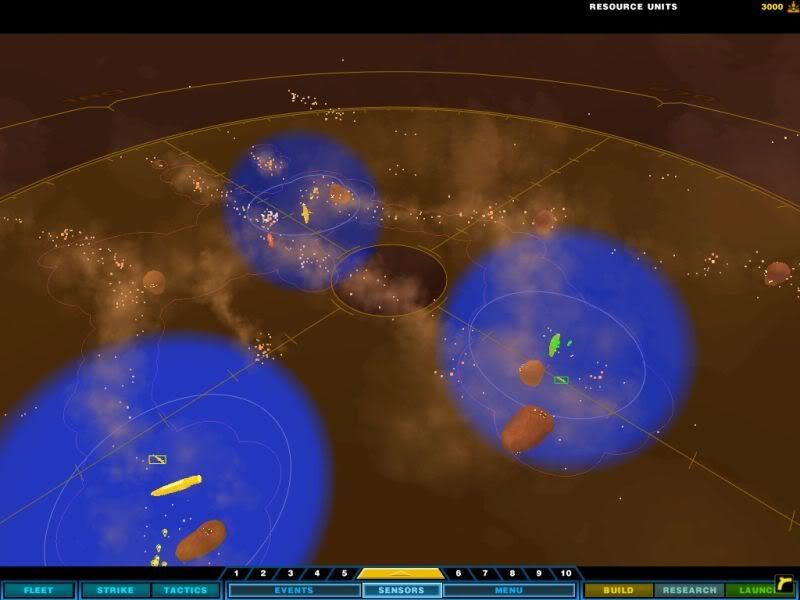A Laggy Grunt wrote: the idea was that there are somewhat challenging hindrances for everyone in area, such as shield leak. I.e. it still was supposed to be system-wide "local conditions".
Realistically, it would only mean that thanks to your local solar radiations lighting the cloud, there's more of noise (flourescent/recombinatory photons) all around and that vacuum on the outer borders of the system isn't quite as clean as everyone else is used to have (which may still have serious effects - e.g. on FTL, which depending on specific warp math may even be enough to affect traffic).
Star Trek II: The Wrath of Khan is where "no shields in the nebula" came from, for most of us.
Yup, and became a meme/trope - e.g. in Master of Orion.
A Laggy Grunt wrote:For the rest of us, increased gas density in space means atmospheric friction. [...] Think of what would happen at SPEC speeds, or even high Vegastrike combat speeds.
Density isn't that high. The usual Interstellar medium is what, ~ 1 cm^-3? Typical
density of solar wind at Earth orbit is ~1 cm^-3, 10x more during flares. Which at
Mercury orbit would be only (150/58)^2=6.7 times more, by the way. Nebulae density is ~ 100-10000 cm^-3 - yeah, it's a lot... comparatively. Unlike protons inbound at >0.1c, doesn't count as "penetrating radiation" on its own, however. Of course, the events add up with velocity and cross-section, but still not much.
I'd expect the main effect of the medium on SPEC to be something like this:
1) Particles entering the warp bubble slow down (which returns drag force on the ship, but it's negligible), giving Cherenkoff radiation (otherwise we'd have EM-interacting matter going "actually FTL", as opposed to "effectively FTL" - which is
not nice). This means a ship using FTL drive illuminates its aft hemisphere with weak, but detectable MW to synchrotronic (depending on the velocity) glow, which intensifies as it gets closer to just about anything, and anywhere in a nebula it stays 10-1000 times brighter than on far approaches to a planet with tolerable temperature not in a nebula. Okay, this at least got to be noticeable.
2) Pparticles leaving without a collision with the ship may drain equal energy from the warp bubble. Still not too much, but it adds up too - this time over much greater cross-section of the warp bubble.
A Laggy Grunt wrote:I was thinking more large-scale artificial gravity, so a fortress would form a nebula at will.
Suppose such artificially enhanced gravitic field would push the object of "very little moon" class to "little moon". But to calibrate our expectations let's look at some specific mark... like the 5-th largest satellite in Solar system. Lunar "atmosphere" is ~100 cm^-3, about 10 tons total over the the whole stone larger than Pluto. That's held by what, about 1/81 of Earth's mass?.. See the problem now?
Artificial gravity used like this could do much more for orbital mechanics and warp interdiction, though.






